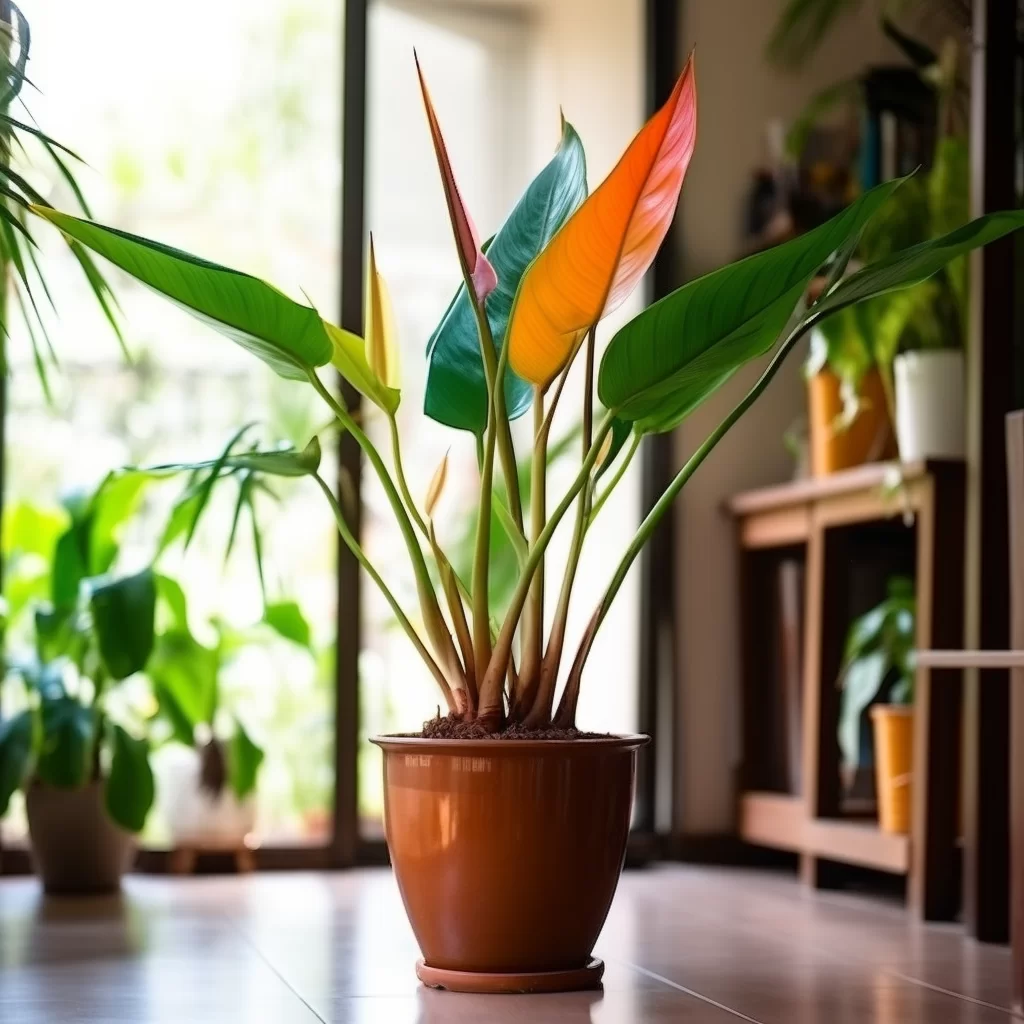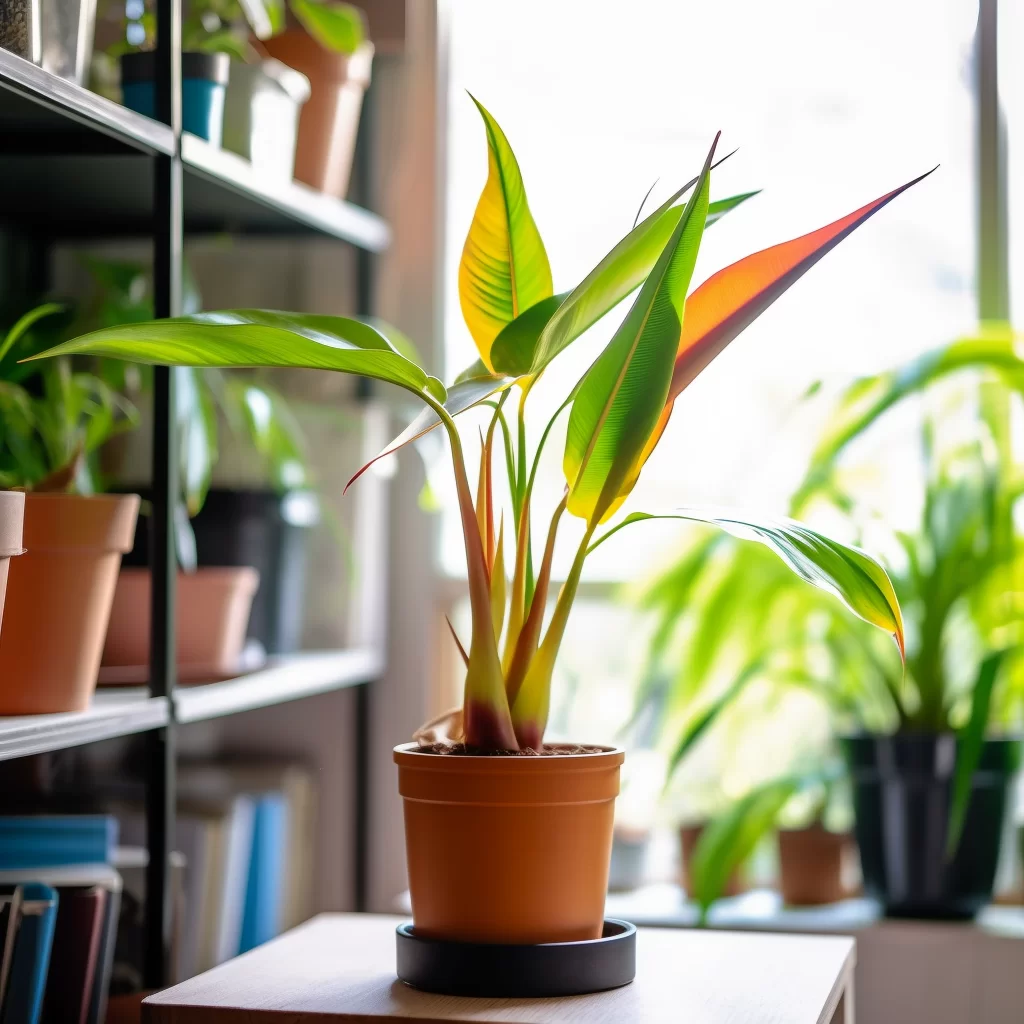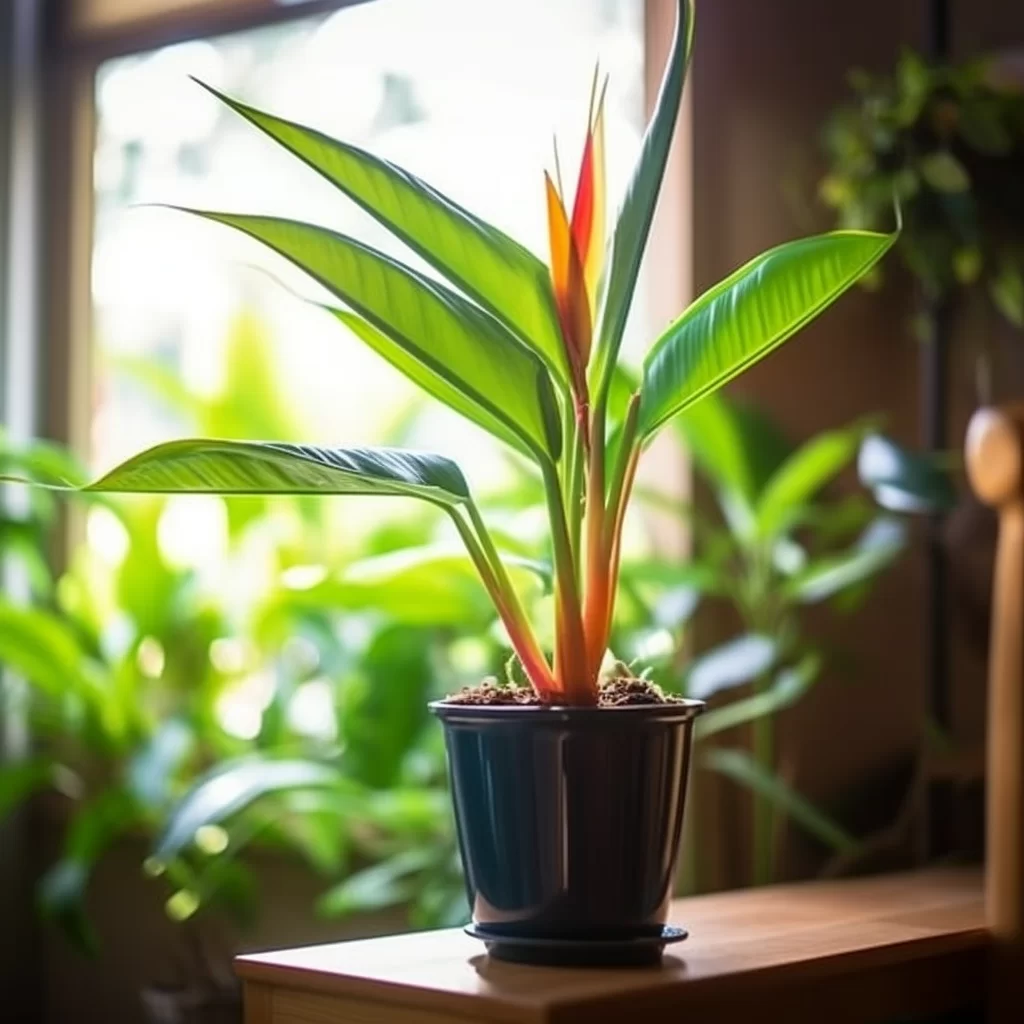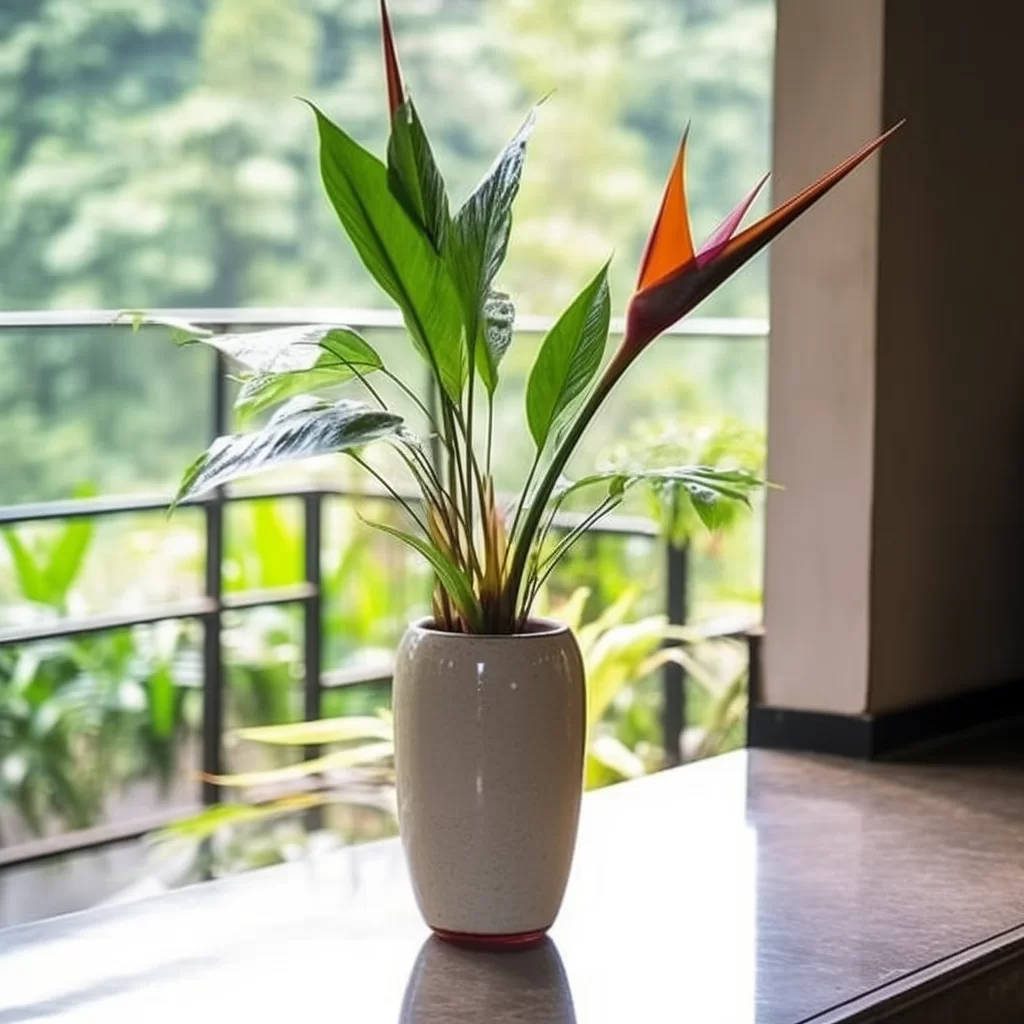Story of Day :
Contents
The Complete Guide to Caring for Your Indoor Bird of Paradise Plant
If you’re on the hunt for a stunning houseplant to bring an exotic touch to your interior, look no further than the bird of paradise.
This marvelous plant boasts luxurious green leaves and eye-catching orange blossoms that will breathe life into any room.
What’s more, it can comfortably grow inside your home with adequate care and attention.
By incorporating this flourishing beauty into your decor scheme, you’ll add a refreshing pop of color and nature’s tranquility.The bird of paradise is much more than just another houseplant; it embodies the tropical aesthetic perfectly while also being practical for indoor environments.
Its grandeur and vibrant tones are sure to uplift any living area or bedroom, making it a truly versatile addition to incorporate in your decoration plans.
Whether you’re going for a beachy feel or simply want something different from traditional flora options, this striking plant is an excellent choice that will effortlessly boost both the ambiance and aesthetics of your space.
What is a Bird of Paradise Plant?
The bird of paradise plant, also called Strelitzia reginae, is a fascinating species that originates from South Africa but can thrive in tropical climates worldwide.
It belongs to the family of Strelitziaceae, which includes other exotic flowers like the crane flower and Heliconia.
The plant showcases large leaves that resemble those found on banana trees.
However, what makes this species unique is its striking orange and blue flowers that bloom in a shape resembling a bird’s beak.
These vibrant blooms are not only visually appealing but also act as a beacon for pollinators such as hummingbirds to help the plant reproduce. Growing bird of paradise plants are popular among gardeners worldwide because they bring an exotic touch to any landscape or indoor garden with their unusual foliage and stunning flowers.
Growing bird of paradise plants are popular among gardeners worldwide because they bring an exotic touch to any landscape or indoor garden with their unusual foliage and stunning flowers.
Their hardy nature and ease of care make them an ideal choice for both experienced horticulturists and beginners alike.
Due to their incredible beauty, they have even been featured in various art forms like sculpture, painting, and textile design- truly showcasing how much influence nature has on art!
The bird of paradise plant is easily recognizable by its vibrant orange flowers that bloom from late winter to early spring.
These stunning blooms resemble birds in flight, which is why the plant has been given the name “bird of paradise.” It’s hard not to be mesmerized by these unique blooms, which make the plant a popular choice for decorations and centerpieces.Apart from their aesthetic appeal, bird of paradise flowers also have symbolic meanings.
They are believed to represent joyfulness, freedom, and magnificence.
People often gift them as a token of appreciation or admiration for someone special in their lives.
With such captivating features and rich symbolism associated with it, it’s no wonder that the bird of paradise plant holds a special place in many people’s hearts.
Caring for Your Indoor Bird of Paradise Plant

Light Requirements
- Birds of paradise plants require bright light but not direct sunlight.
- Aim for at least six hours per day in an east- or west-facing window.
- If this isn’t possible, consider using artificial grow lights instead.
Watering Needs
- Keep soil evenly moist but never waterlogged or bone dry.
- Avoid letting the pot sit in standing water – this can lead to root rot.
- Mist leaves regularly with room-temperature water during dry periods or if humidity levels are low.
Taking care of your bird of paradise plant is not a demanding task, and one of the essential aspects is fertilization.
During spring and summer, when the plant grows actively, it requires nutrients to support its development.
To achieve this, you need to feed your plant every two weeks with a balanced fertilizer that contains nitrogen, phosphorus, and potassium in equal amounts.
These three elements are essential for proper growth and flowering of the bird of paradise plant.
However, during winter when the growth rate slows down or stops altogether due to low light levels or temperature changes feeding should be slowed down to once a month or stopped altogether.Adequate fertilization is crucial in maintaining healthy plants as it provides them with the necessary nutrients required for their growth.
For bird-of-paradise plants specifically you should feed them every two weeks during spring and summer using a balanced fertilizer that has equal portions of nitrogen (N), phosphorus (P), Potassium (K).
Nitrogen promotes leafy green growth while Phosphorous enhances flower production hence making sure they get equal portions ensures an overall balance which results in healthy foliage as well as vibrant flowers which are trademarks for these tropical beauties.
In addition to all this once winter sets in you can reduce feeding frequency since the lower temperatures inhibit active growth hence reducing nutrient requirements so about one feed per month would suffice then resume regular feeding when spring comes around again!
Pruning Tips
- <
- Birds of paradise can grow up to six feet tall indoors, so pruning is necessary to keep them at a manageable height.
- Cut back any yellowing or damaged leaves using clean and sharp scissors or pruning shears.
- Remove spent flower stems as soon as the blooms die off to encourage new growth.
Troubleshooting Common Problems
It is not uncommon for bird of paradise plants to encounter growth or appearance issues.
If you observe any such problems in your plant, there are a few common culprits that could be behind them.
These include factors like insufficient watering, inadequate lighting, pest infestations, and nutrient deficiencies.Poor watering habits can lead to the development of wilted or discolored leaves in bird of paradise plants.
Similarly, if they do not receive adequate sunlight exposure or temperature regulation, their growth might become stunted and unproductive.
Furthermore, certain pests like spider mites and mealybugs can cause harm by feeding on the plant’s sap while robbing it of essential nutrients at the same time.
Lastly, nutrient imbalances resulting from improper fertilization techniques could leave your bird of paradise struggling to maintain its health and appearance as well.

Brown Leaf Tips
If you notice the tips of your beloved plant’s leaves turning brown, don’t panic! This is a common sign that your plant may be suffering from dehydration.
To confirm this, simply check the soil moisture level by using a finger or a moisture meter.
If it feels dry, then it’s time to give your plant some water.
However, don’t go overboard as overwatering can also cause leaf tip burn and root rot.
It is recommended to adjust your watering routine accordingly based on the specific needs of the type of plant you have.Keeping an eye out for brown leaf tips can help ensure that you are providing proper care for your plants.
While every plant has unique watering requirements, most prefer consistent and even moisture levels in their soil.
Depending on factors such as humidity levels, temperature changes and amount of sunlight received, plants may require more or less frequent watering schedules than usual.
By adjusting how often and how much water you give to them in response to their changing needs will keep them happy and healthy for years to come!
No Blooms
If you’re wondering why your bird of paradise plant isn’t blooming even though it’s healthy, then there might be a simple solution.
Maybe the plant needs more sunlight than it’s currently getting.
You can move the bird of paradise closer to a window or provide artificial grow lights to supplement natural light.
This should help encourage blooming in your plant, and improve its overall health.Another factor that can affect blooming is fertilizer.
Make sure you are providing enough fertilizer during the growing season to properly nourish your bird of paradise plant.
Using a balanced fertilizer with equal amounts of nitrogen, phosphorous, and potassium will help promote healthy growth and flowering in your plants.
With proper light exposure and sufficient fertilization, your bird of paradise should start producing beautiful blooms soon enough!
In conclusion, it is important to remember that a conclusion should never be the first time a reader encounters new information.
Instead, it should serve as a summary of the key points discussed and provide closure to the topic at hand.
Oftentimes, conclusions will offer insight into areas for further study or leave readers with thought-provoking questions to consider.At its core, a well-crafted conclusion serves as an essential component of any written work by providing readers with a sense of resolution.
Whether writing an academic paper, article, or even an email message, taking the time to carefully construct a thoughtful and effective conclusion can make all the difference in leaving your audience with a lasting impression of your ideas and arguments.
The bird of paradise plant is a stunning addition to any indoor space, adding a touch of exotic beauty reminiscent of tropical paradises.
Its lush green foliage and vibrant flowers make it an excellent choice for homeowners who want to add color and texture to their interiors.
Taking care of this plant is relatively easy as long as you provide it with enough light, moisture, and nutrients through regular fertilization.It’s essential to keep an eye on potential issues such as brown leaf tips or lackluster blooms that may arise due to improper care.
However, you can address these issues promptly by pruning the plant when needed and providing appropriate water levels.
By taking good care of your bird of paradise plant, it will grow healthily over time with its beautiful flowers blossoming spectacularly – rewarding you with its stunning presence in your home for years ahead!